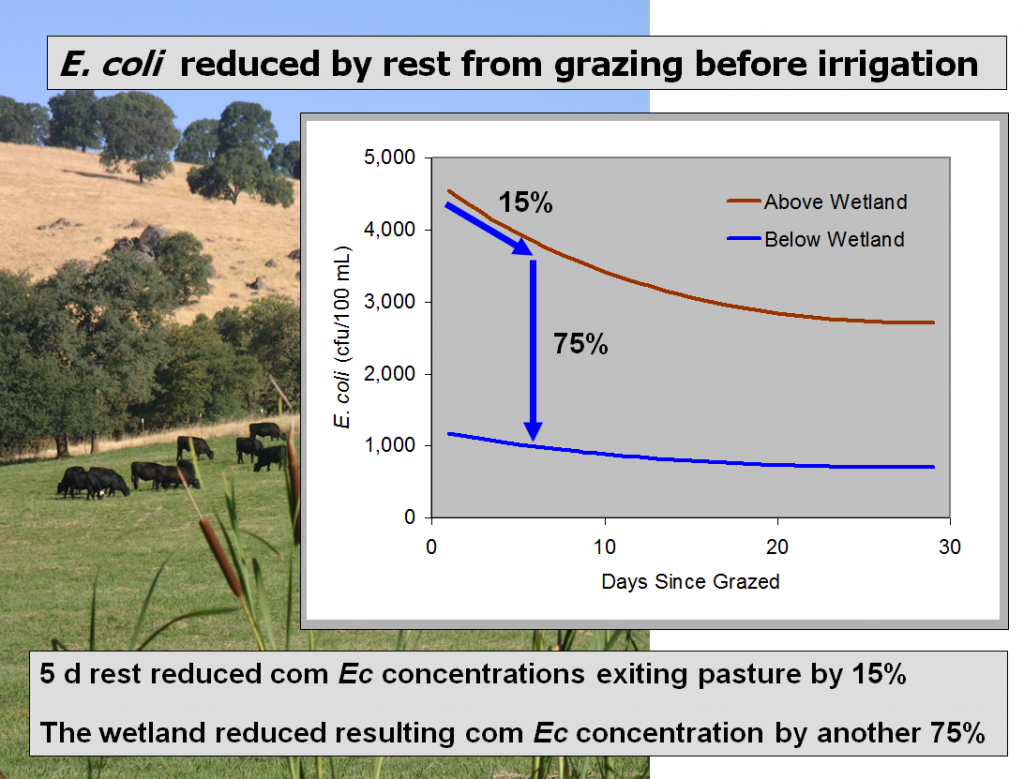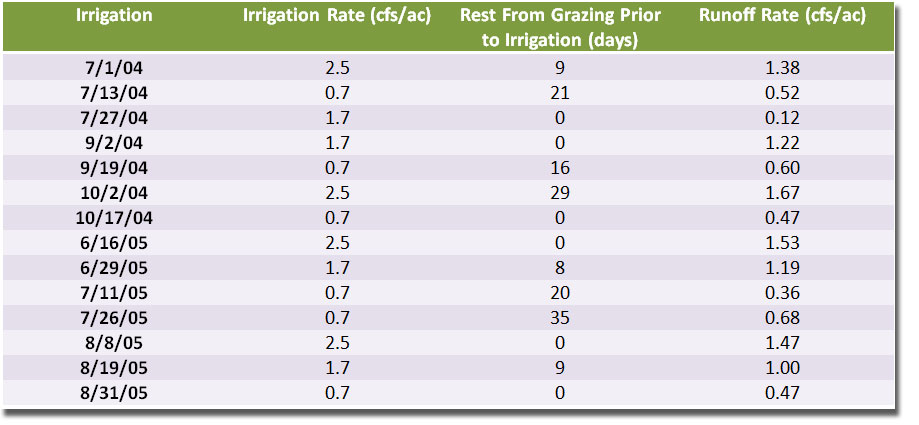We examined the transport of E. coli from a 12 acre flood irrigated pasture to determine how pasture management affected concentrations in pasture runoff. Irrigation was managed to create a range of runoff rates during 14 irrigation events. This allowed us to investigate the potential to reduce E. coli concentrations by reducing runoff rate; thus, reducing erosion of bacteria from cattle fecal pats and flushing of bacteria from the pasture. The timing of grazing by beef cattle was managed to create a range of total days rest between grazing and irrigation of the pasture. This allowed us to characterize the reduction in E. coli in attributable to processes such as mortality of E. coli and drying of fecal pats.
Pasture irrigation and grazing was managed to create a range of runoff and days rest from grazing across 14 irrigation events.
We found that as irrigation runoff increased, E. coli in pasture runoff increased. This was due to increased pollutant mobilization and transport capacity as runoff rate increases. E. coli concentrations were highest when cattle were actively grazing the pasture. E. coli concentration was reduced with increased rest between grazing and irrigation. This was due to: 1) natural mortality of microbes in cattle fecal pats as pat age increases; and 2) the drying of the fecal pat and the formation of a dry shell on the outside of the pat reducing the susceptibility of the pat to erosion by irrigation water flowing across the pasture.
Pasture irrigation and grazing was managed to create a range of runoff and days rest from grazing across 14 irrigation events.
We found that as irrigation runoff increased, E. coli in pasture runoff increased. This was due to increased pollutant mobilization and transport capacity as runoff rate increases. E. coli concentrations were highest when cattle were actively grazing the pasture. E. coli concentration was reduced with increased rest between grazing and irrigation. This was due to: 1) natural mortality of microbes in cattle fecal pats as pat age increases; and 2) the drying of the fecal pat and the formation of a dry shell on the outside of the pat reducing the susceptibility of the pat to erosion by irrigation water flowing across the pasture.
Runoff and Days Rest from Grazing

Irrigation and grazing management can reduce E. coli transport from pastures.

Management Implications
E. coli transport from pastures can be reduced with irrigation management designed to minimize tailwater runoff rate and volume. Significant reduction in E. coli concentration can also be achieved by rotating cattle out of a pasture to allow several days of rest from grazing prior to irrigation.
Supporting Information
Knox, A.K., K.W. Tate, R.A. Dahlgren, and E.R. Atwill. 2007. Management Reduces E. coli in Irrigated Pasture Runoff. California Agriculture. 61:159-165. Read More

